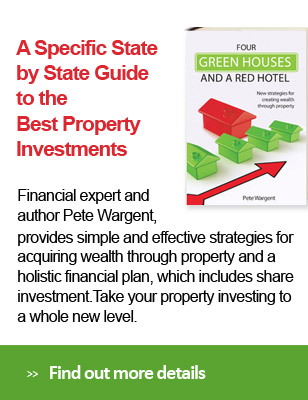A monster topic to cover in one blog post, for sure!
But let’s see what I can squeeze in to one entry – for more details and ideas on these subjects, grab a copy of my book.
Step 1 – Be mindful of your money mantras
We all hold internal dialogues and tell ourselves stories about all different aspects of life, and money is no exception, with many of our scripts ingrained in our subconscious during our youth.
 Each of us has a range of “scripts” or what I call money mantras, an unconscious code of beliefs about money which in turn determine our thoughts, emotions, feelings, and actions.
Each of us has a range of “scripts” or what I call money mantras, an unconscious code of beliefs about money which in turn determine our thoughts, emotions, feelings, and actions.
These can cover anything from our beliefs about wealth and wealthy people, to our attitudes towards giving and receiving, spending, investing, how much is “enough”, and a whole host of other related issues.
“Taking risks is a bad idea” is just one possible example of a money mantra.
“Most rich people inherited their wealth” is another, or “I don’t trust anyone when it comes to money”.
In fact there are thousands of potential money mantras or beliefs which you might hold unconsciously.
Some people say “money isn’t that important to me”, while others believe that “if you want more money, you have to work harder.”
Higher income earners might say that “I always buy the best of everything”, while those of a more parsimonious bent might believe that “a penny saved is tuppence earned” (or they might have done in post-war Britain, at least).
Most of us have a belief, for example, about how much an hour of our time is worth, and your figure is likely to be based to some extent on your self-esteem and self-belief in your expertise.
Note that whether or not these money scripts are true, they are inevitably vitally important since unconscious beliefs determine emotions, feelings, and in turn behaviours and actions.

It is almost certain that you hold some dis-empowering money mantras which are holding you back from achieving your ultimate financial goals, for the simple reason that we all do.
I barely have the space to breach the surface of this subject in a single blog post, but you will need to become mindful of your money mantras, delete the dis-empowering beliefs, and replace them over time with a more practical and empowering code of beliefs.
Step 2 – Change your thinking
Most employees picture their consumption life cycle as looking something like the graphic below.
Often people start out adult life in the workforce with some debt from higher education, which they eventually get paid off, and then steadily they build some wealth through owning a home and in their pension fund.
At some point around the retirement date they aim to take out a lump sum or buy an annuity.
Often folk have a plan to spend most of their money before they pass on, hence phrases such as “SKI holiday”, “you can’t take it with you”, or “hopefully I’ll spend the last dollar on the day I die!”.

Through using compounding growth in your favour, you may try to think a little differently.
Instead of aiming simply to get by in retirement, if you can build an investment portfolio which reaches a critical mass – whereby passive income exceeds expenses – then you can continue to grow your net worth in perpetuity.

Compound growth is always the key to building wealth over time.
Try to remember that $5,000 invested at a compounding annual return of 8 per cent over 45 years could be worth nearly $160,000, before adjusting for inflation.
Therefore consider that each time you opt for discretionary expenditure or the buying of luxury items, the cumulative opportunity cost of each decision could be momentous!
Step 3 – Resolve to buy assets
While businesses prepare a number of key financial statements such as a cash flow statement, and another which looks at changes in equity, arguably the two most important financial statements are:
(i) the income statement (what we used to call back in my day a “profit and loss account”, before we adopted International Accounting Standards) which summarizes income and expenditure; and
(ii) the statement of financial position or the balance sheet, which summarizes assets and liabilities.

Try to think of your own personal finances as being just like a business.
Most employees today are consumers in the economy, earning money from wages, paying some taxes, and then using the rest of their money to live, consume, and buy things, as indeed is their right.
While consumers may have some assets (home, pension), they may also have liabilities (credit cards debt, car loans) which attract interest expenses.
The consumer’s cash flow profile may therefore look something like the one below, with money flowing in monthly from a salary, but then flowing straight back out again in the form of tax, interest payments, and other expenditure.

If you want to achieve financial freedom then instead of being only a consumer in the economy you ultimately need to become a stakeholder, owner or investor, and the easiest way for most employees to do this is to resolve to acquire income-producing assets (and not consumer liabilities).

The cash flow profile of an investor sees their assets generating income in the form of dividends, rental income, and interest.
When passive income exceeds monthly expenditure, the investor becomes financially free, no longer reliant upon their salary income to survive from month to month.
Step 4 – Design a spending plan
OK, OK, I know…it’s way too boring and you aren’t going to spend any of your valuable time drawing up a budget.
I get that!
I’ve been a Chartered Accountant for a decade-and-a-half, spent half my career drawing up budgets and forecasts (shudder), and I couldn’t be bothered to do a detailed budget either.
A busman’s holiday if ever there was one, and not a very interesting one at that.
As a compromise, however, may I suggest instead drawing up a simple spending plan, which quickly summarises your key monthly expenditure, including your fixed essential costs (mortgage, rent, insurance, loan repayments etc.), your variable essential costs (food, fuel & transport, repairs, phone & internet), and your discretionary expenditure (meals out, nights out, movies, footy).
If you want to move ahead financially you need to find a way to drop more of your after-tax income into a fourth bucket, that being for investments, ideally 20 per cent or more of your net income.

Now, yes, I get that too, 20 per cent is impossible.
I know, I was a 20 year old with an Olympic standard thirst myself not quite so many years ago, and I would have told you then that saving any money at all was an impossibility, let alone 20 per cent of it.
But like any goal, this can be achieved over time.
How?
One step at a time!
One of the most effective methods is to not increase your expenditure each time you receive a pay rise or bonus, instead opting to increase your savings steadily as you can afford to do so.

Saving 20 per cent of your income may not be possible for you immediately, but it certainly can be achieved over time.
The savings are there somewhere, and if you want it badly enough you can and will find them, even if it takes some years.
Step 5 – Choose your weapons
Asset allocation – it’s your ultimate bucket list! It has been said that asset allocation accounts for more than 100 per cent of investment returns. Why?
Because fund management fees, transaction costs and taxes act as a drag on most investment portfolios.
If you instead choose to invest in low cost investments which you can hold in perpetuity instead of continually trading in order to beat the market, then you can lose this painful drag on your portfolio.
Of course, the internet is chock full of young #experts who reckon they can time the market expertly (not that most of them ever make any money from doing so – lol), but just as most drivers believe they are of above average ability, in reality sadly it cannot be so!
It has also been said that asset allocation is the only free lunch in investment. Meaning?
Spreading your risk helps.
It’s a good thing!
This is another way of saying “don’t put all of your eggs in one basket”.
No matter how appealing any investment seems, all asset classes go through highs, lows, winter and summer seasons, so spread your risk through diversifying your investments.
There are a number of ways to diversify investment risk: through holding different equities (e.g. buying a diversified product such as a low cost index fund or LIC, by investing across different markets (e.g. Australia, US, UK), by investing in different asset classes (property, shares, bonds), or by diversifying across time (by investing at regular intervals, rather than in a lump sum).
Balancing a portfolio
There is no such thing as the perfect asset allocation for we all have different goals, time horizons, preferred asset classes, and tolerances for risk.
Speak to a licensed financial advisor who can help you to decide on the right strategy for you – by which I mean an independent professional who will charge you a straight fee for service, not some slimeball that recommends buying an off-the-plan apartment in your self-managed super fund in order to cream off a fat 6 per cent commission for himself! 
As an industry we have done rather a fine job of making investment sound more complex than it needs to be, partly, the sceptic might say, so that average investors feel the need to engage professionals to manage their money for them.
Investment types are no exception, particularly with the growth of hybrid investments such as convertible bonds, derivatives, and contract instruments such as CFDs.
In simple terms there are essentially only TWO types of investments – ownership investments (e.g. real estate, equities, commodities), and lending investments (e.g. bonds, notes, deposits).
Lending investments help to balance a portfolio and can provide certainty of income, but ownership investments generally offer the greater opportunity to compound your wealth over the long term through increasing income streams and the potential for growth.

A balanced portfolio should include property, shares, fixed interest investments, and cash – and if you are so inclined gold and silver (while providing no income) can act as an effective hedge.
If all of this is starting to make your head spin, try to again think of four buckets for your investments, which you will top up over time and as you can afford to do so.

Instead of trying to rebalance your portfolio in a complicated manner each year – which can be inefficient since buying and selling generates transaction costs and taxes – consider whether you can simply top up the lagging asset classes.
When buying quality assets which you never have to sell, then this can work efficiently and effectively.
If you were to back-test an ideal portfolio using the past few decades as a guide, the exercise may tell you to have more than half your portfolio invested in bonds (fixed interest), but this only really helps if you think next next few decades will be anything like the few decades just gone, which they may not.
With interest rates at rock bottom, globally many fixed interest investments have gone from guaranteeing a “risk free return” to practically offering “return free risk”.
And while cash as a buffer is an important safety net – as well as allowing you to pounce on great opportunities which may come along – holding too much cash will act as a drag on returns.
You can see why asset allocation is such a challenging proposition today, and why using an independent financial advisor to build you a workable long term plan is likely to be a smart idea.
Step 6 – Snowball your wealth
Use time as your greatest ally, not an enemy, by allowing compounding growth to work its magic.
The below chart shows the fearsome impact that a 2 per cent per annum difference on returns can make to your long term results.
While stock brokers and fund managers will of course suggest that you invest with them, if they are charging significant fund management fees or managing your portfolio actively, they need to have a proven track record of doing something pretty darned good to make it worth your while.
Buying and selling investments generates transaction costs and taxes, and larger funds can suffer from market impact, as well as the usual challenges of the bid-ask spread or slippage.
Thus whatever you do – don’t pay 2 per cent of your money every year to an index hugger!

While it might seem contradictory to suggest that you use a market professional when investing in property, the key difference is that a buyer’s agent charges a fee-for-service as a one-off cost, whereas a fund manager typically charges their fees annually, often based upon the balance you have invested with them (meaning that their fees increase over time, which is compound growth of sorts, but the type of compounding that helps them, not you).
Of course, your goals may seem very far away and daunting when you are just starting out.
Take a deep breath, and resolve to take it one step at a time without worrying about what your peers are up to.
Whether you start out small or with a larger lump sum, the principles of successful investment don’t change too much: spend less than you earn, invest the difference in assets which have a proven track record of generating a wealth-creating rate of return, re-invest the profits, and allow compound growth to work its magic over the long term.

Step 7 – Invest counter-cyclically
 Penultimately, while time in the market may notionally be more important than timing the market, that doesn’t mean that you shouldn’t try to buy more assets when they are cheap.
Penultimately, while time in the market may notionally be more important than timing the market, that doesn’t mean that you shouldn’t try to buy more assets when they are cheap.
In equities markets Dow Theorists will tell you that this means aiming to buy more during the accumulation phase of the cycle, rather than the public participation phase or distribution phase.
In plain English, this means aiming to buy more when sentiment is low and stock markets are cheap, generally punctuated by lower price/earnings (P/E) ratios, and higher dividend yields.
Not dissimilarly, property investors should aim to do the same, though at the time of writing in the residential sector rental yields are fairly dismal in some capital city locations.
The property market cycles do tend to recur over time – as rising demand pushes up prices, construction and supply respond, in turn dampening rents and then prices.
Rinse and repeat.

Naturally property investors aim to buy in the period before prices increase.
Note that while the graphic below may be representative of what might happen to property prices through a cycle, it shouldn’t necessarily be taken too literally.
For example, prices can and do sometimes fall below previous troughs, as property owners in many mining towns and resources regions will discover to their regret over the next couple of years.

Step 8 – Protect your wealth
There are several different aspects to protecting your wealth ranging from holding the appropriate insurances, to not getting divorced, to owning your assets within the appropriate structures (e.g. companies, trusts etc.), and more.
One thing I would stress the importance of is the importance of finding a higher purpose for your financial goals, a means of contribution, or ‘giving back’.
If you lack a higher purpose or chase wealth for wealth’s sake, one day you might achieve your financial goals, and what happens then?

No comments:
Post a Comment